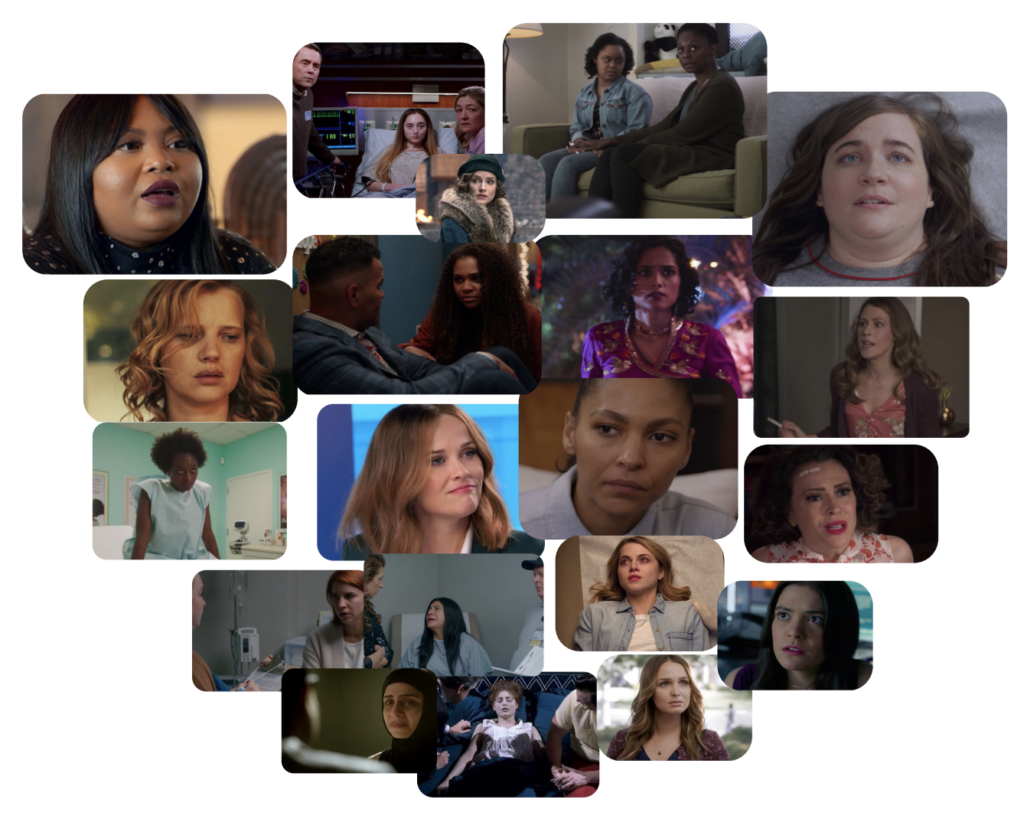As states continue to obstruct access to abortion, Hollywood spent 2019 taking a different approach—including abortion in plotlines that convey both the political and personal nature of the procedure and help demystify the issue for audiences.
The most recent report from Abortion Onscreen, a research program dedicated to analyzing the portrayal of abortion in scripted television from Advancing New Standards in Reproductive health at the University of California in San Francisco, looked back at what they got right and wrong this year.

This year, we saw more abortion stories on television than ever before: 43 shows featured characters having abortions, disclosing past abortions or having conversations about abortion, whereas in 2018, we documented only 18 such plotlines, and in 2017, only 22. Significantly, the majority of these shows—58 percent—featured a character who actually had an abortion instead of only discussing it, providing audiences with the opportunity to empathize with characters in diverse circumstances, like the mother whose family is complete (Anne on “Workin’ Moms“) or the teenager who doesn’t want to be pregnant (Maeve on “Sex Education“).
But as captivating or resonant as these portrayals might be, they leave much to be desired, particularly when it comes to race. The majority of this year’s characters who had abortions are white, yet the majority of people who have abortions are people of color. This discrepancy may contribute to the myth that abortion is a “white women’s issue,” leading to feelings of shame, guilt or isolation among people who don’t see their experiences reflected in the media they consume.
When “Shrill” aired on Hulu earlier this year, many gushed—me included!—over the depiction of a matter-of-fact abortion in the pilot episode. Like most depictions in 2019, though, it still didn’t reflect the reality of abortion access in the U.S. today.
While TV shows also featured more politically-driven content this year than in years past—”Law and Order: SVU” detectives helped teenage Evangeline have an abortion in New York after fleeing both an abusive stepfather and abortion restrictions in Ohio; “The Bold Type,” “Happy!” and “13 Reasons Why” skewered the predatory practices of anti-abortion Crisis Pregnancy Centers that deliberately mislead people seeking abortions—mundane laws like bans on insurance coverage or required admitting privileges, or the inability to afford the procedure or to take time off work, which are some of the more more common barriers to access, were rarely addressed onscreen. (Notable exceptions include “Grey’s Anatomy” and “Euphoria,” in which characters discussed difficulty coming up with the cost of an abortion). This may confuse audiences into assuming that abortion is easy to obtain, when in reality, abortion is more difficult to access today than in years past.
Four plotlines depicted characters who attempted to self-manage their abortions, though all of these attempts were ineffective. On “Orange is the New Black” and “Grey’s Anatomy,” characters tried to use herbs to end their pregnancies; when they were unsuccessful, they obtained medication abortions. On “Proven Innocent” and “Chicago Med,” two characters order abortion pills online, although neither of them have effective abortions; on the former, the character decides not to have an abortion, and on the later, the character didn’t obtain the correct set of pills.
Given the rise in public conversation about self-managed abortion, it’s no surprise that TV shows are shining a spotlight on this practice, but these depictions don’t reflect reality. Self-managed abortion using pills ordered online is both safe and effective. It is more legally risky than medically risky. Instead of exploring how Internet access is revolutionizing abortion care in the face of legal restrictions, these plotlines associate self-managed abortion with both danger and deception.
This trend in abortion procedure inaccuracies weren’t just limited to self-managed abortions. Our recent analysis found a dearth of depictions of medication abortion on television—which is especially significant, given that at least one third of real life abortions are abortion by pill. This year’s abortion depictions conform to this trend—nine of the 12 characters who had abortions onscreen had surgical abortions, and only two episodes featured medication abortions.
These plotlines sent mixed messages about medication abortion: some suggest that it causes medical problems (“Chicago Med”), while others (“Grey’s Anatomy“) succinctly explaining how the medications work. Given the rising prevalence of medication abortion and the public’s confusion about it, content creators have a clear opportunity to demystify medication abortion and clarify that it’s a safe, simple and common abortion method.
After seeing Hollywood’s outrage earlier this year over Georgia’s proposed abortion ban, it’s not surprising that content creators are incorporating more abortion stories in their plotlines—but more abortion stories does not mean better or more accurate portrayals of abortion. For television to really move the needle on how the public thinks and feels about abortion, content creators might consider moving away from depicting young, wealthy, white and unparenting characters as the center of their abortion plotlines. Inspiration, they should seek inspiration from the lives of real people who have abortions.




